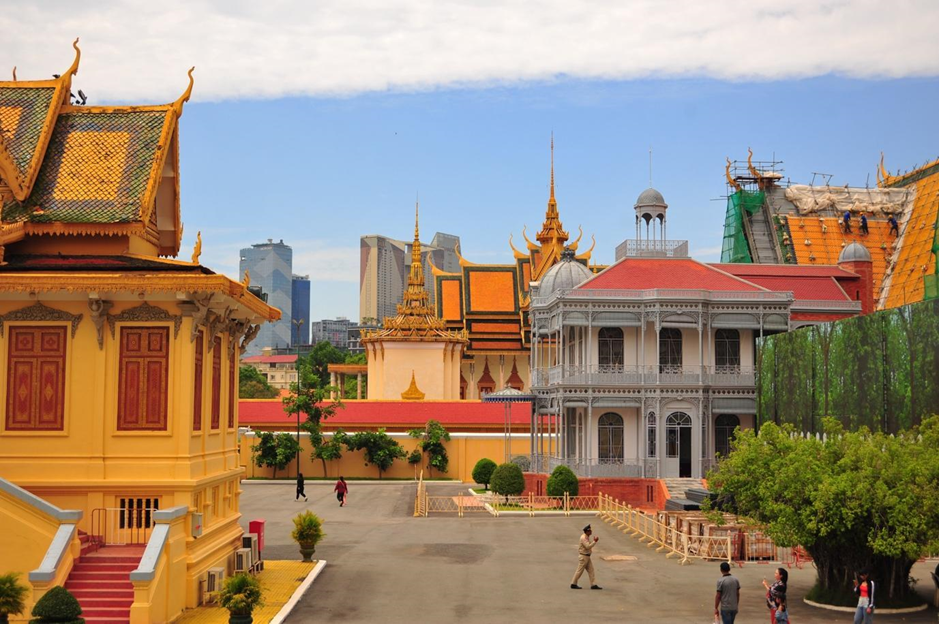Cambodia: Rotules bowling, a traditional game of the Khmer New Year
- Pascal Médeville

- Apr 14
- 3 min read
Ethnobotanical journey: let's head to Cambodia to discover a traditional game based on... seeds!

To reach the site of Kbap Spean, the ‘river of a thousand lingas’, in the Angkor archaeological park, you have to take a path more than 1500 metres from the entrance. This path crosses an area with very uneven terrain, and reaching the coveted site requires quite an intense physical effort. Just before arriving at the superb site, a few street vendors offer exhausted visitors refreshments and fruit.

I knew the word used to refer to the ‘patella’ in Khmer, and I explained how it was borrowed to refer to these large seeds due to the similarity in shape and size between the knee bone and the seeds. Back at home, a quick search in Pauline Dy Phon's Dictionnaire des plantes utilisées au Cambodge (Dictionary of plants used in Cambodia) taught me that the word ‘âng-kunh’ is also used in Khmer to refer to the sword liana, or Saint Thomas liana (Entada rheedei, syn. Entada pusathea). It is a ‘woody, climbing vine of dense evergreen or deciduous forests, widely distributed in Africa, the Mascarene Islands, tropical Asia and Oceania.’ Ms Pauline Dy Phon further explains that, in Cambodia, ‘The young leaves are eaten as vegetables.
The stems, cut and macerated in water, are used as a shampoo to wash the hair. The cooked fruits are sometimes eaten. The bark is used to make ropes and fishing nets. However, the Cambodian friends interviewed know nothing about the food or cosmetic uses of this woody vine, and are mainly familiar with the seeds in that they are used in the ‘ball game’ (ល្បែងអង្គញ់ [lbaèng âng-kunh]), also known as the ‘ball-throwing game’ (ល្បែងបោះអង្គញ់ [lbaèng baoh âng-kunh]), one of the many traditional games that Cambodians enjoy playing during Khmer New Year festivities.
Rules
The rules of the game are as follows: first of all, two teams of five to ten people are formed. Most often, a team of girls plays against a team of boys.
Each team places three or five sword liana seeds in a line in front of them. The seeds must be placed on their edge, vertically, so the teams usually choose to play on sandy or earthy ground.
The aim of the game is for each team to knock down the seeds of the opposing team by throwing other seeds of the sword liana. The first team to knock down all the seeds of the opposing team wins the game.
In the game, the seeds (normally called គ្រាប់ [kroap] in Khmer) are called ‘kaoy’ (កោយ). A distinction is made between kaoy that are placed on the ground (កោយដាំ [kaoy dam], literally ‘planted kaoy’) and kaoy that are thrown (កោយបោះ [kaoy baoh], ‘thrown kaoy’).

The seed in the centre of the device must be thrown last, otherwise the clumsy team loses.
There are several techniques for throwing the seeds: they can be thrown directly by hand towards the target, they can be rolled on their edge, or they can be placed on the top of the knee and sent off by propelling them with the thumb in the direction of the target.
The members of the losing team are subject to a punishment: the winners have the right to hit the losers with two seeds. The seeds can be placed at right angles (in which case the flat part of the seed below strikes the opponent) or vertically one on top of the other (in which case the edge of the seed is used to strike). The position of the seeds when the blows are struck is agreed in advance between the teams, as is the number of blows to be struck. The blow struck with the flat of the seed is less painful than the one struck with the edge.
It is essential, when blows are struck, that the noise produced by the seeds clattering together is heard. If the person striking the blow fails to make the clapping sound, it is the other person's turn to strike the blow. The blows are most often dealt on the knees, but can also be on the elbows, shoulders, or even the malleoli or sides of the wrist.
Traditionally, the game of throwing kneecaps is played rather at the end of the day.
The video below, which can be found on YouTube, shows a wild game of ‘knee-throwing’ between two teams of young Khmers:
Pascal Médeville — Tela Botanica (cc)







XY miner XY miner
cesur mining cesur mining
block chain cloud mining…
block chain cloud mining…
block chain cloud mining…
xy miners xy miners
rich miner rich miner
savvy mining savvy mining
xy miners xy miners
savvy mining savvy mining
savvy mining savvy mining
XY miner XY miner
cesur mining cesur mining
block chain cloud mining…
block chain cloud mining…
block chain cloud mining…
xy miners xy miners
rich miner rich miner
savvy mining savvy mining
xy miners xy miners
savvy mining savvy mining
savvy mining savvy mining
XY miner XY miner
cesur mining cesur mining
block chain cloud mining…
block chain cloud mining…
block chain cloud mining…
xy miners xy miners
rich miner rich miner
savvy mining savvy mining
xy miners xy miners
savvy mining savvy mining
savvy mining savvy mining